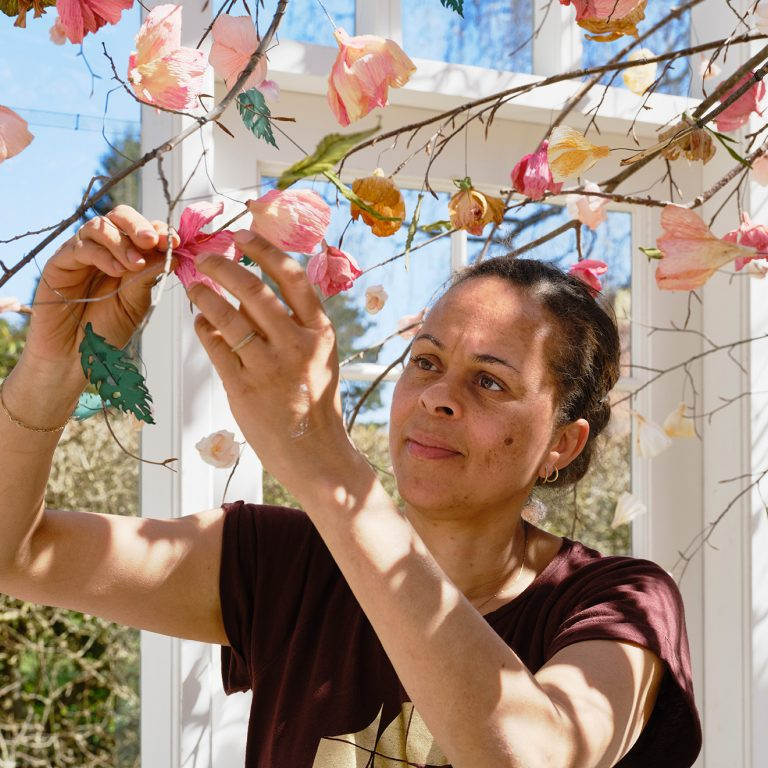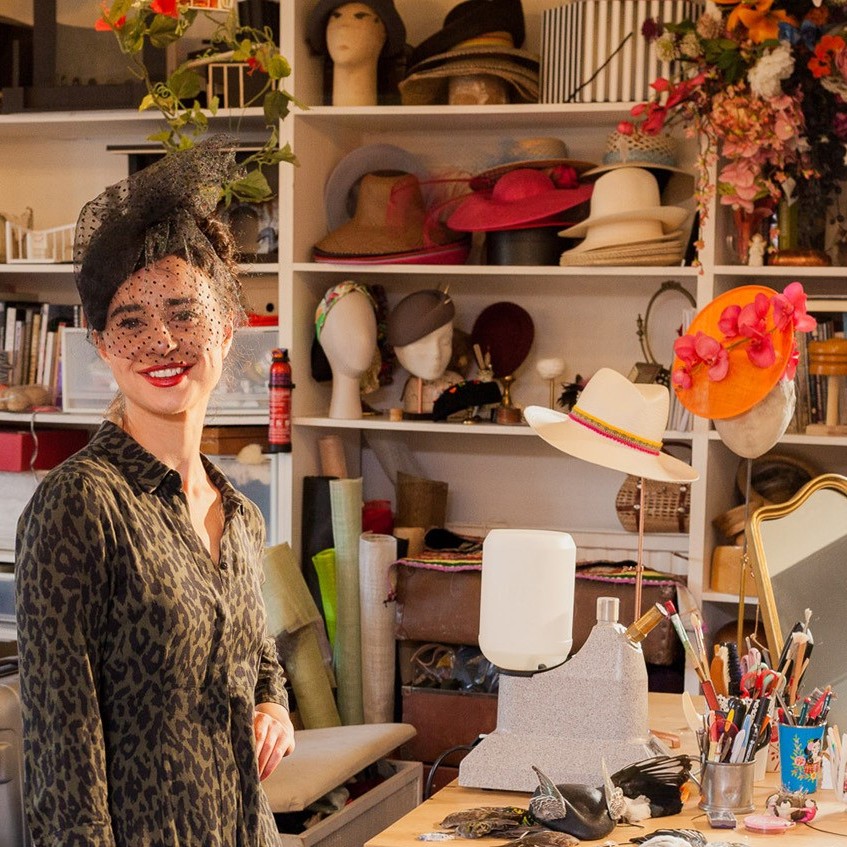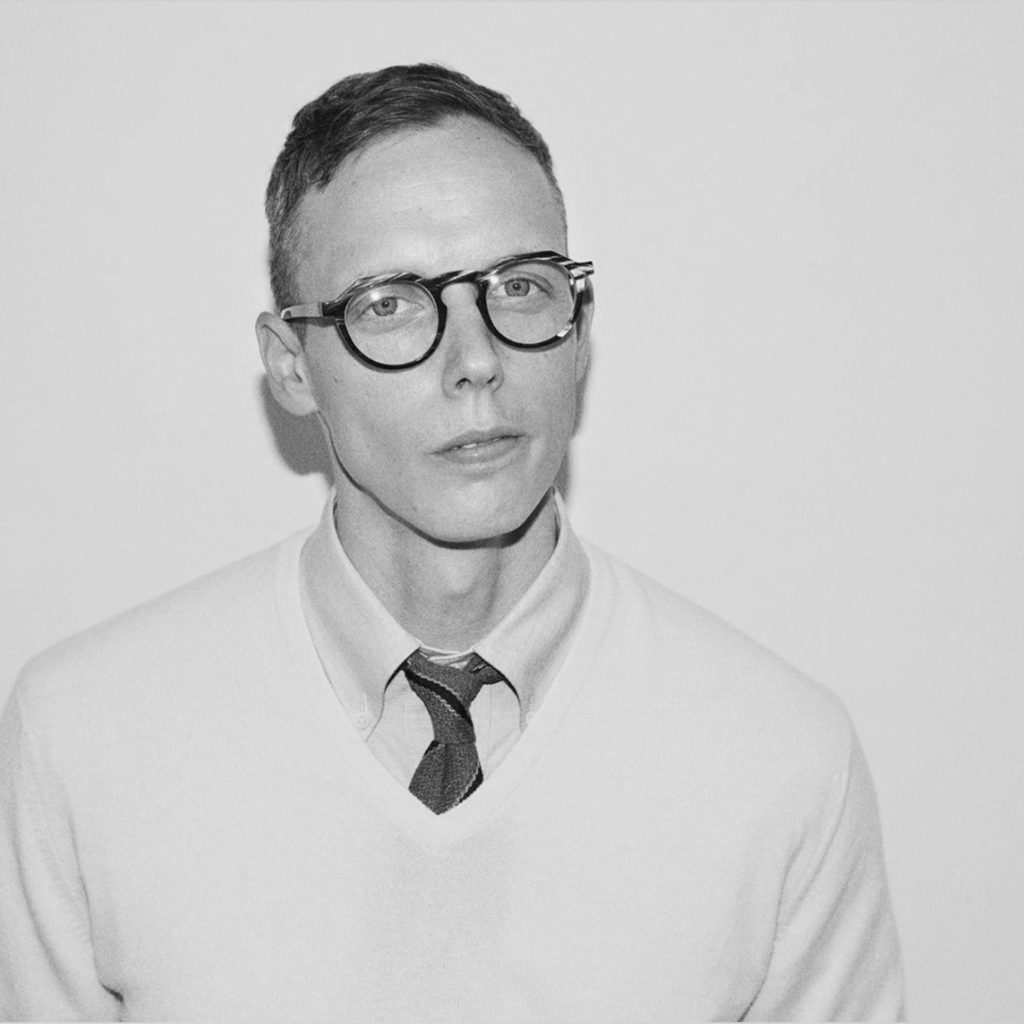Louise Richardson Textile Artist
Explain how you use three mediums, textiles, sculpture and photography to make a piece.
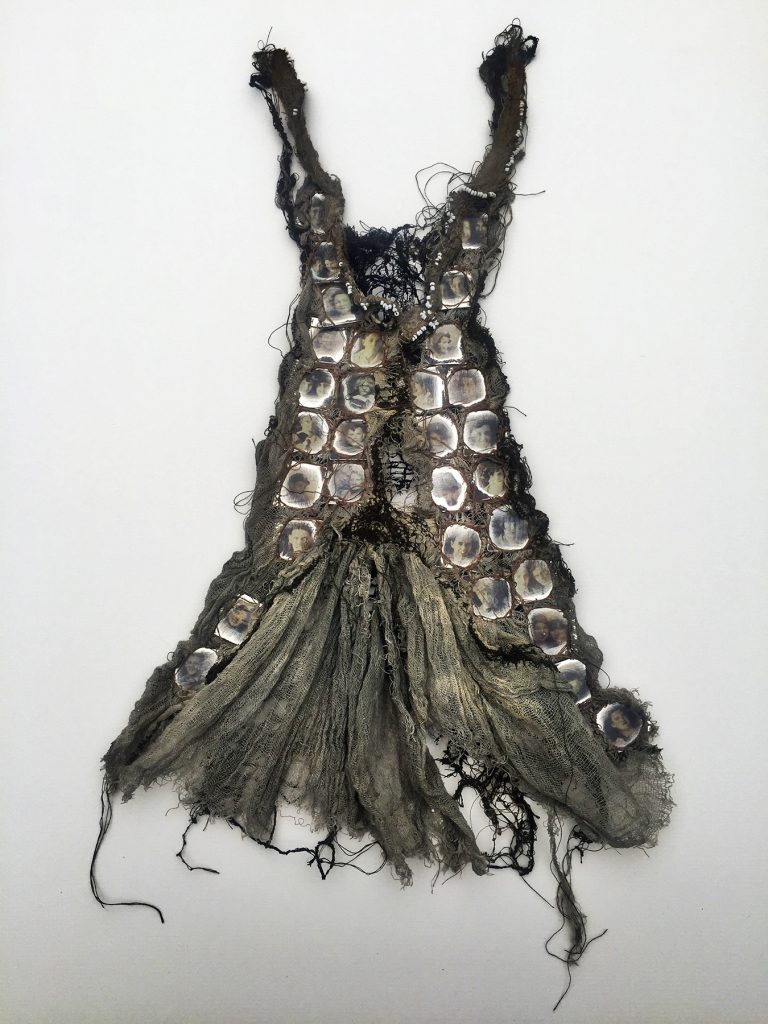
Talisman
Talisman has all three of these ingredients within the piece. The idea of telling stories is very important to me, taking everyday objects and creating tales. Within art, anything is possible: scale, materiality and time don’t matter.
The diversity of materials and application of different mediums within my work gives me the opportunity and freedom to choose an application which best suits the story.
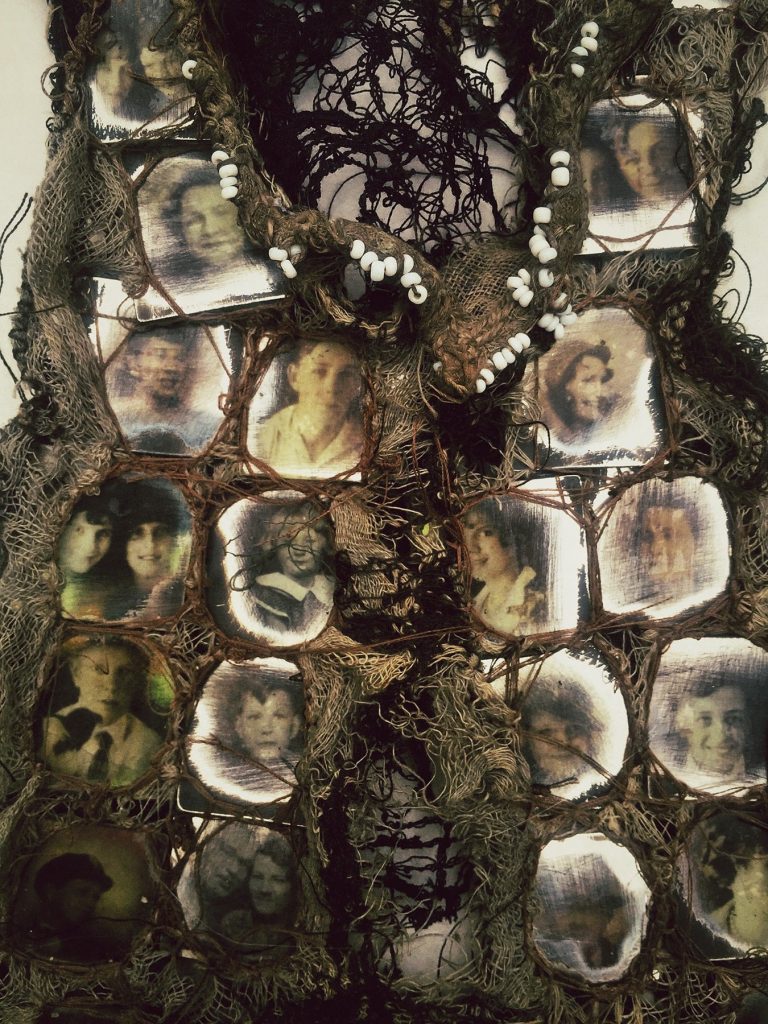
Talisman, Detail
Although the outcomes are often diverse, they all have common human connections, resulting in artworks that are in fact close to us in our everyday lives.
Discuss your use of both birds and bugs in your work.

Aerie
Within my work animals and humans coexist on the same level, they come with their own stories and inspire new ones, highlighting the connection and tenderness we have with nature.
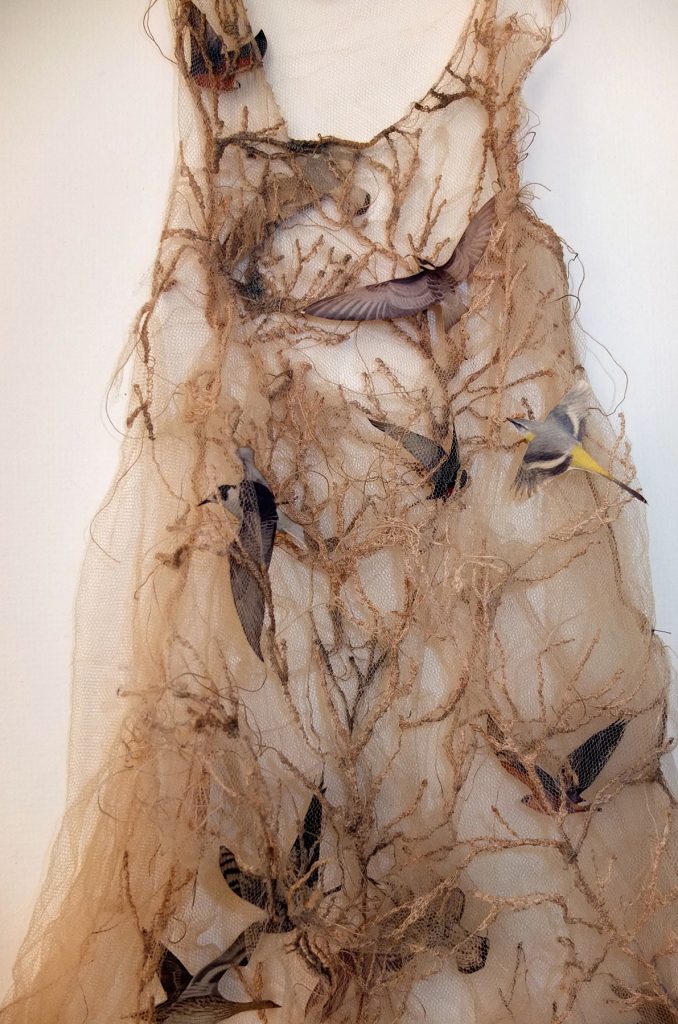
Aerie, Detail
Take two dresses, lead us through the process of reconstruction and construction in these art pieces.
The garments are often unwearable, by reinventing, combining, observing and retelling their tales gives them a new sense of life, place, preservation and resilience. Whilst a lot of my garments are made from scratch, the piece Ward originally was a child’s vintage nightgown, and so it came with its own history and absorbed stories.
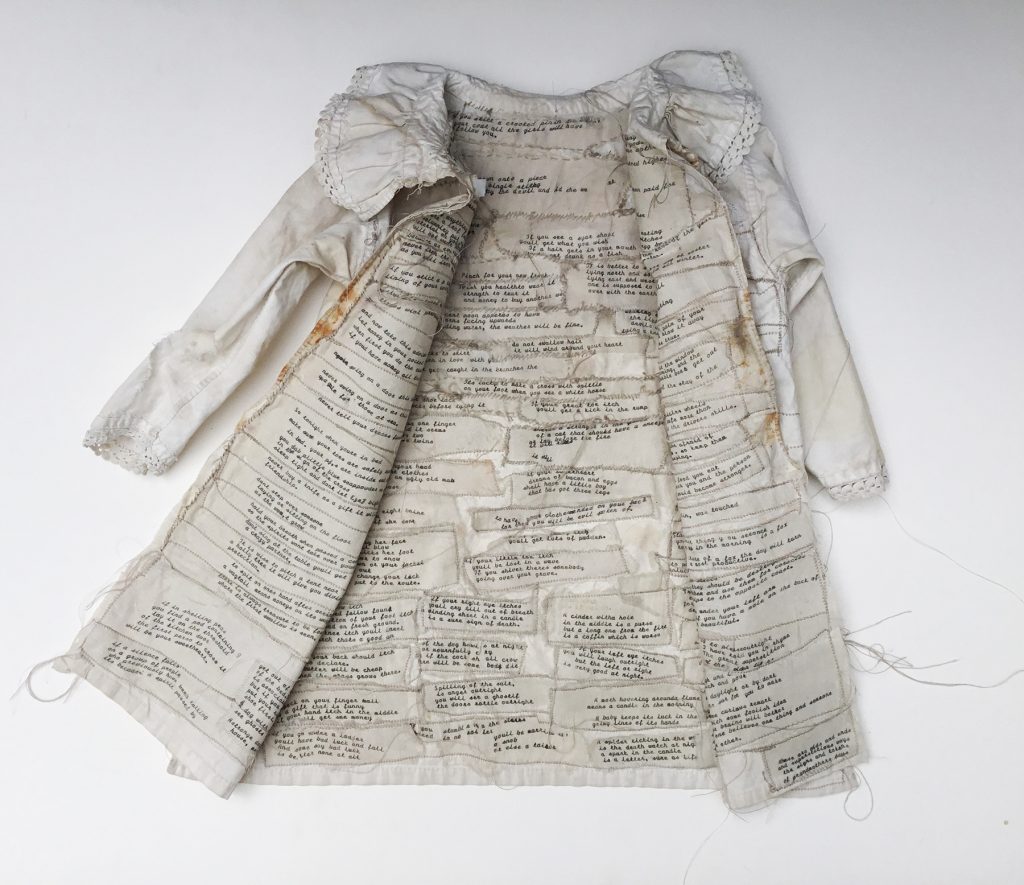
Ward
Within this piece I wanted to explore old wife’s tales, stories and sayings that are passed down through generations. By stitching these into the lining of the garment somehow imbues the wearer with inherent safety.

Ward, Detail
In contrast Telling Tales which consists of approximately 13,000 nails individually placed and rusted, again echoing nature as it resembles fur. This piece is about materiality transformation and alchemy of materials. The process of making is also fundamental; the time it takes to make transcends the piece and encourages the viewer to also take time to observe and make connections with the work, holding the viewer’s gaze, involving and including them in the dialogue, questioning the maker’s intention, interpretation of the wearer and how one would feel owning or wearing this garment. This aims to encourage storytelling and engagement with the piece.

Telling Tales
You almost became a ballerina comment how this has influenced your work.
Dance, particularly ballet, has always been something that has been important to me probably, more subliminally than literally — the silent storytelling and the use of costume to tell a story. The clothes and the shoes worn, particularly to practice in, are often fragile and worn, representing the dances that have gone before.
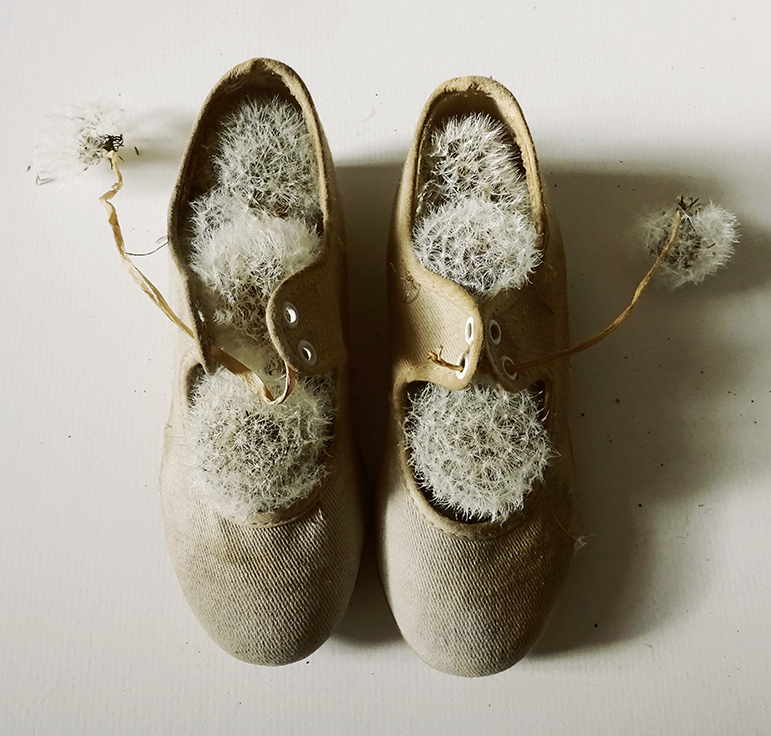
Go Softly
2D or 3D, discuss when and why your use each and when.
Often the pieces lead themselves. A piece which is intrinsically about the making process and its place living beside us in the world often becomes more object based and three dimensional. Whereas the more two-dimensional image-based work is out of time, and an observation and recollection of something that has happened.
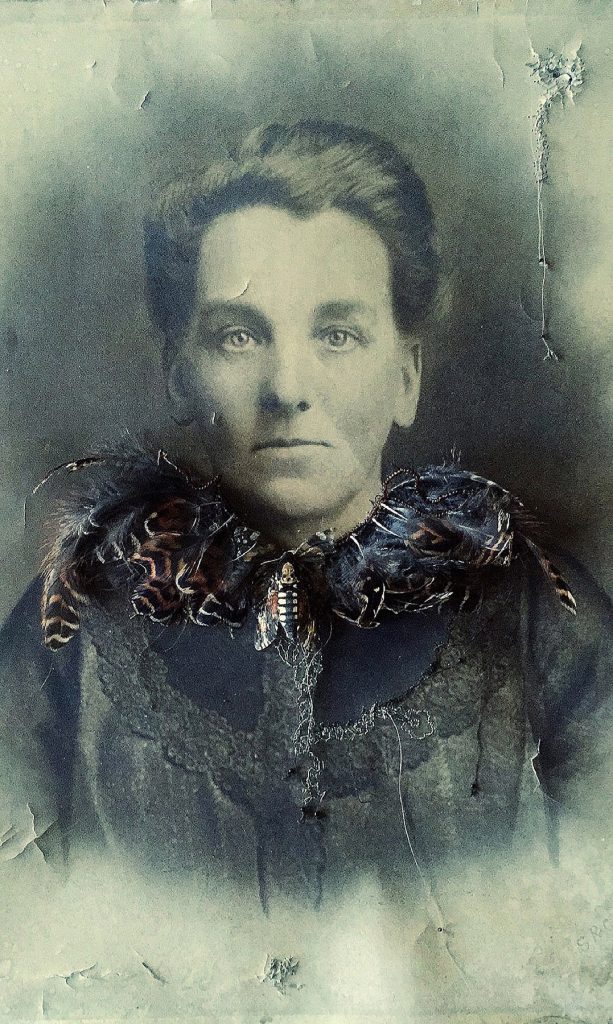
Charm
Although the outcomes are often diverse, they all have common human connections, resulting in artworks that are in fact close to us in our everyday lives.
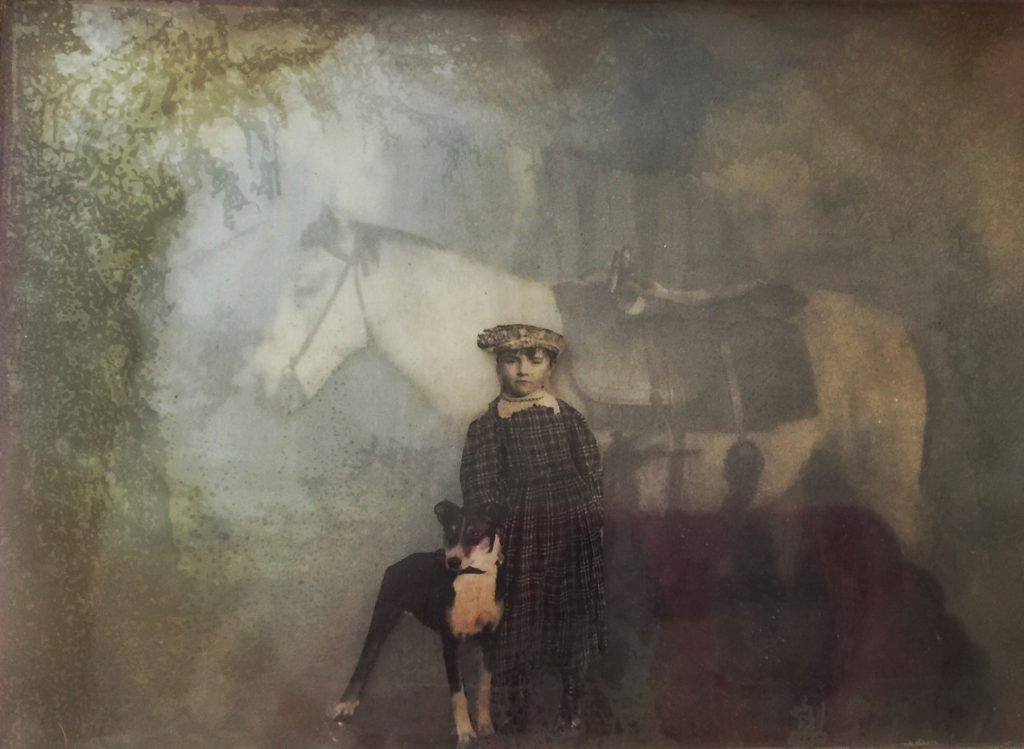
Cowgirl
How important is detail in all your work?
For me detail in the work allows the slowing down of time, opening, up a quiet, calmed dialogue through discovery and placement, and locating evidence of human intervention within the work for the viewer. For me as an artist, the handmade quality of my practice means I too spend time with the process; this is very important to me, and things happen on this journey that feed into the work, or into other pieces.

Imprint, detail
You use very small amounts of colour. How, when and why do you add colour?
I tend to use the colours the objects own, and if I do intervene, it tends to be natural colours, or dyes. By the nature in which I make work the pieces often have their own marks which occur during the making process, and the older garments that I have reused have come with their own stains, scars, marks and patches. Adding too much colour seems to distract from what is already there and takes away from the integrity of the piece.
 Moth Eaten
Moth Eaten
Shoes are such a huge part of a woman’s wardrobe. What has led you to working with little girl’s shoes?
Shoes as a garment seem to hold and condense a person’s identity, like a genie in a bottle. The space inside the shoe is as important as the outside; a place which holds the person and often takes on their form. They evidence a person’s experience journeys, walks and dances. Interventions and recreations allow for interpretation and the re-telling of these stories.
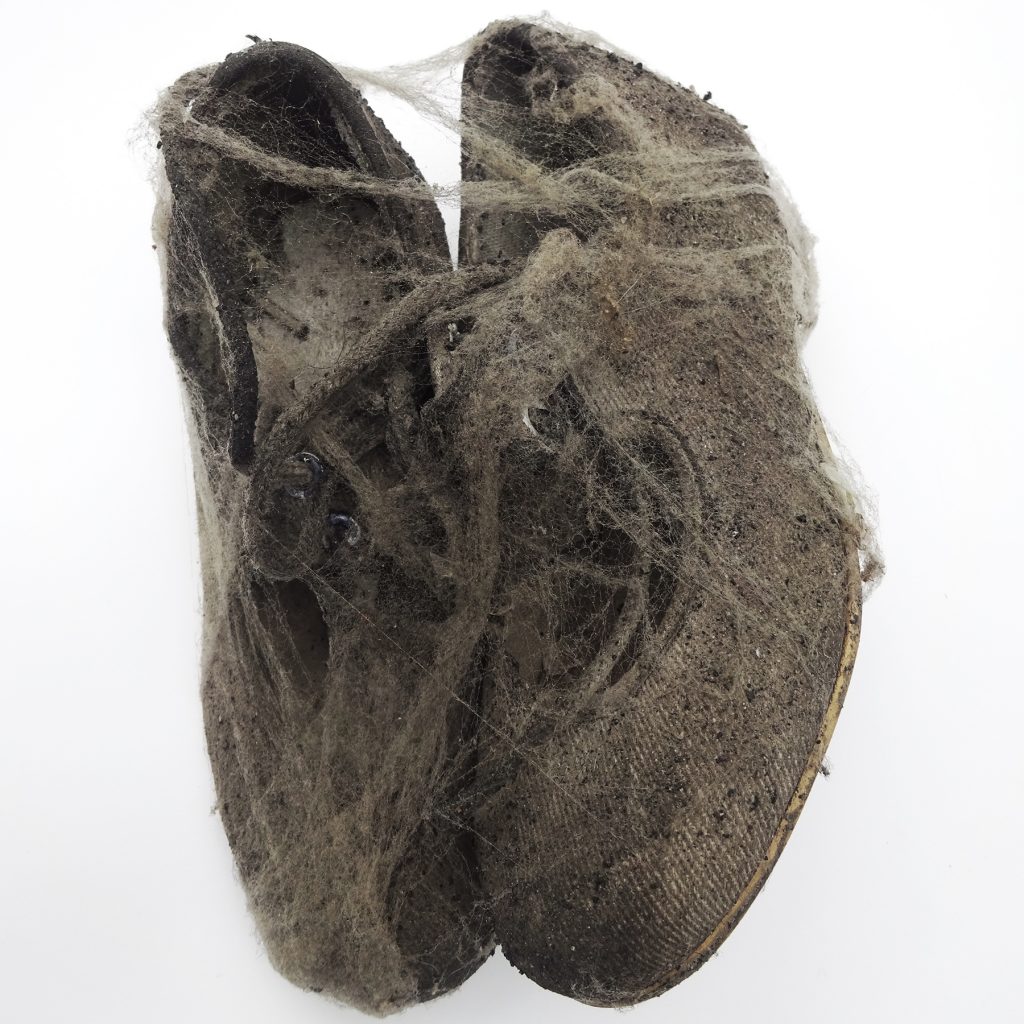
Bind
What collections do you have?
The materials I tend to use are every day accessible objects. I predominantly work with natural materials, for example the garments I make tend to be cottons, linens, etc, and where possible second hand. These objects are often found or sourced naturally. Mainly they are kept in my studio, but also on shelves, windowsills, boxes, cupboards and wherever there’s a space!
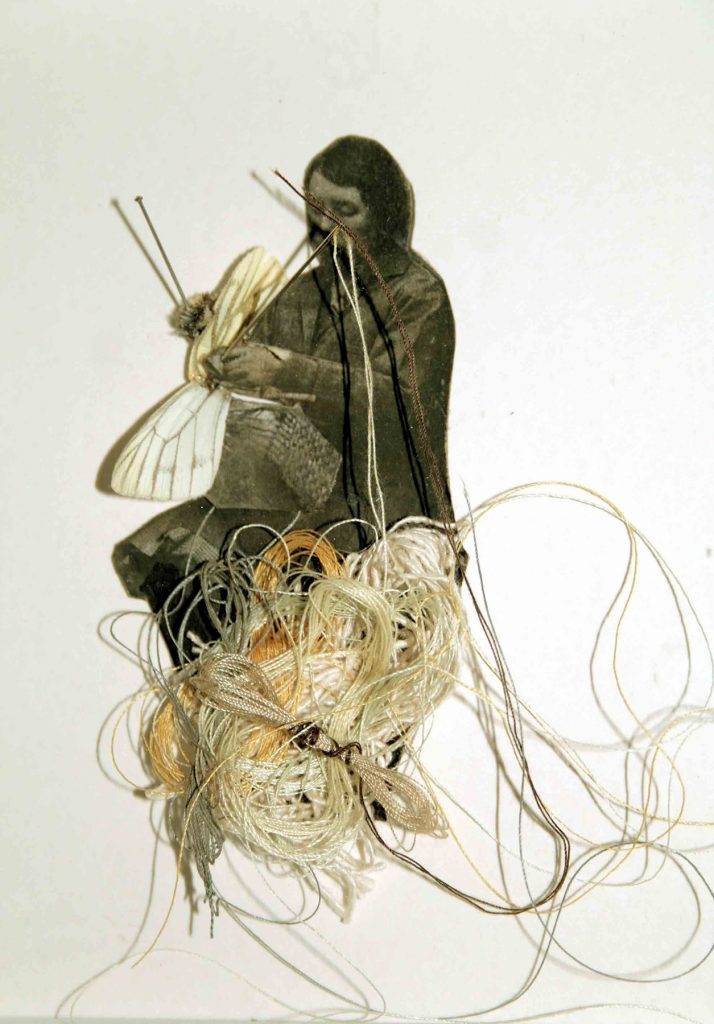
Find It, Bind It
There is no real cataloging I tend to know that somewhere is the item I need, even if it may take time to find it, but inevitably I will unearth something good along the way.
Is display a major consideration in your work both as gallery pieces and for the buyer?
The work tends to be displayed in glass wall-mounted deep box frames, as the artworks are often delicate, and fragile; it also allows for control of the space that they inhabit. This form of presentation also nods towards museum cases, artefacts and collections, placing the piece out of time, again slowing down the observation and discovery of the work.
Discuss the importance of fantasy in your work. How have you been drawn to this whimsical part of your nature?
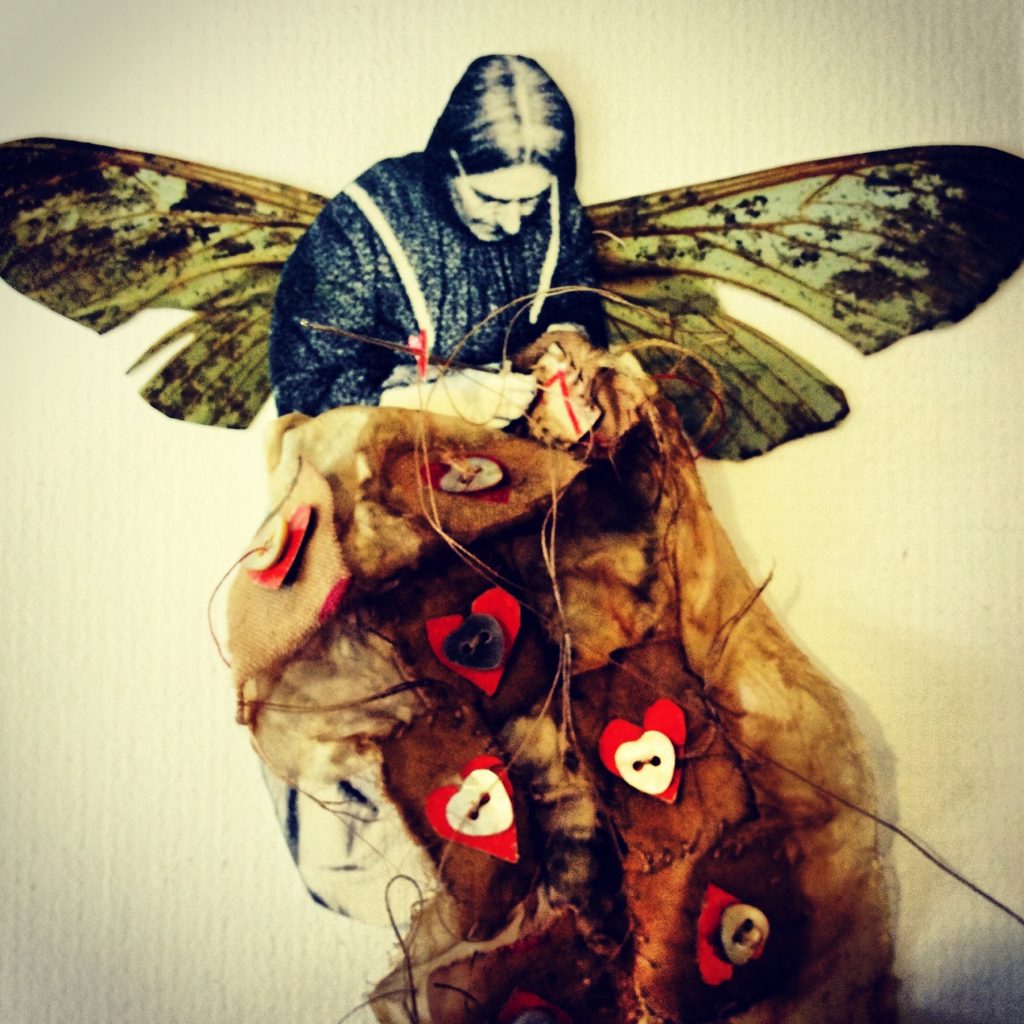 Nine Hearts
Nine Hearts
Fundamentally, I must be moved by something or someone, and want to translate that into a piece of work, hopefully with integrity. The medium and way of expressing these ideas allows for interpretation and translation.
The beauty of art is that anything is possible. A place for objects to coexist in a world in which they wouldn’t normally meet. It allows for a range of possibilities and stories; using the ordinary and creating tales to make it magical — a space where anything where anything can happen.
Contact:
Louise Richardson
http://www.louiserichardsonartist.com/
Deborah Blakeley, Melbourne, Australia
Interview by Deborah Blakeley, April 2020
Think a colleague or friend could benefit from this interview?
Knowledge is one of the biggest assets in any business. So why not forward this on to your friends and colleagues so they too can start taking advantage of the insightful information the artist has given?
Other artists you may be interested in:




